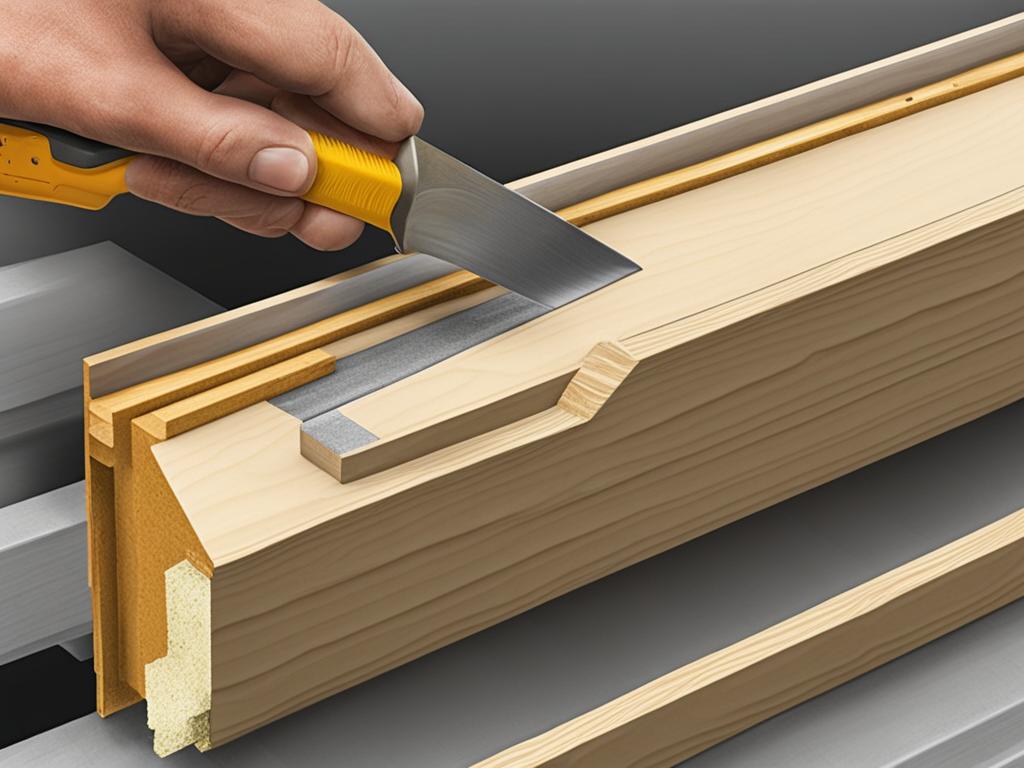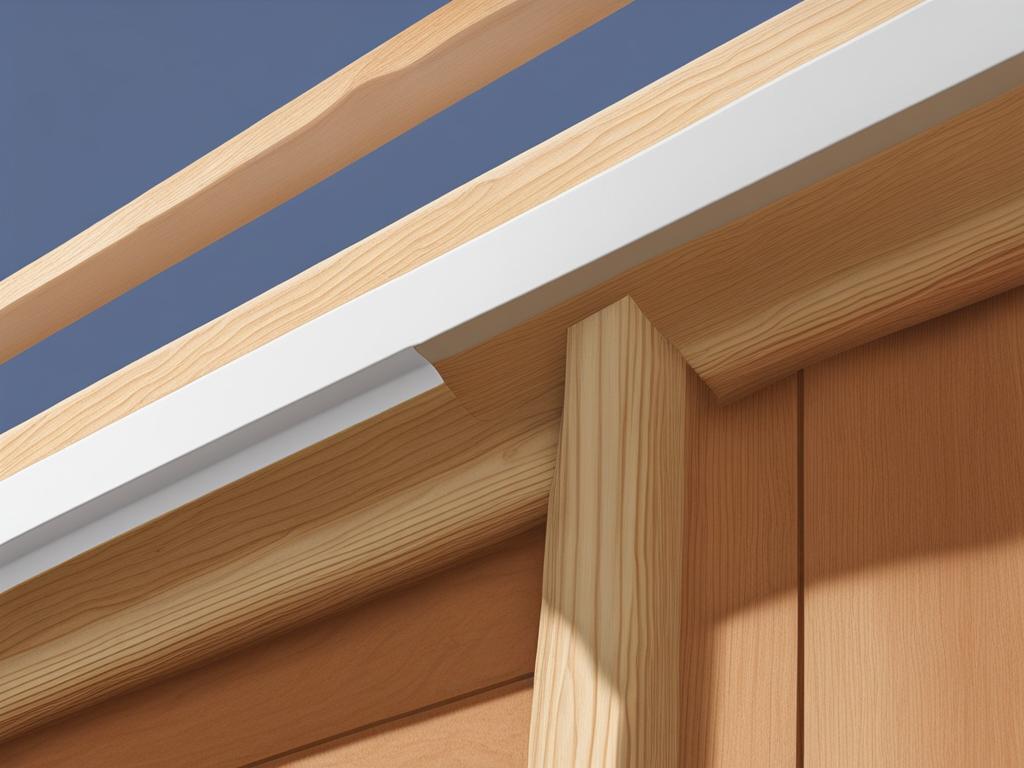When it comes to construction, the sill plate and bottom plate are two crucial components that play distinct roles. Understanding the differences between these two elements is essential for a successful building project. In this article, we will explore the purpose, similarities, and differences between the sill plate and bottom plate, helping you make informed decisions for your construction needs.
Key Takeaways:
- The sill plate is located at the base of exterior walls, transferring loads from the walls to the foundation.
- The bottom plate stabilizes interior walls, providing stability and support.
- Sill plates are typically made of treated wood, while bottom plates are made of standard lumber.
- Sill plates are more exposed to moisture and require termite protection.
- Bottom plates are easier to access and replace compared to sill plates.
The Role of Sill Plates in Construction
In construction, sill plates play a crucial role in providing a strong and stable foundation for a building. They serve as a vital connection between the walls and the foundation, ensuring proper load transfer and structural integrity. Sill plates, also known as sole plates, are horizontal framing members that are installed at the base of exterior walls.
The primary purpose of sill plates is to distribute the weight of the structure evenly and transfer it to the foundation. This load transfer helps to stabilize the walls and prevent any undue stress or strain on the structure. By anchoring the sill plates securely to the foundation using anchor bolts or other fastening methods, the load distribution is effectively achieved.
Sill plates are typically made of treated wood to resist moisture and decay. This treatment ensures the longevity and durability of the sill plates, especially considering their exposure to the elements. Additionally, treating sill plates with protective coatings or preservatives helps to enhance their resistance to moisture, pests, and termite damage.
By providing a robust connection between the walls and the foundation, sill plates contribute significantly to the overall strength and stability of a building. They help in preventing settling, shifting, and any potential structural problems that may arise due to inadequate load transfer. Furthermore, sill plates act as a barrier against moisture intrusion and minimize the risk of rot or decay in the foundation.
Overall, the benefits of using sill plates in construction are numerous. They provide load-bearing support, enhance stability, protect against moisture, and contribute to the longevity of a building. When comparing sill plates to sole plates, it’s important to note that both serve similar purposes, but sill plates are specifically designed for exterior walls, while sole plates are used for interior walls.
Cindy Conrad, a seasoned construction engineer, explains, “Sill plates are critical components in construction that ensure the walls are securely connected to the foundation. They play a vital role in load transfer, stability, and protecting the structure against moisture and pests.”

The Purpose of Bottom Plates in Construction
Bottom plates play a crucial role in construction by stabilizing interior walls and ensuring their alignment and strength. Located at the base of interior walls, these components provide support to the wall framing and help distribute the weight of the wall above.
Typically made of standard lumber, bottom plates are secured to the floor joists or subfloor using various fastening methods. This anchoring ensures that the walls remain upright and stable, even when subjected to external forces.
One of the primary functions of bottom plates is to anchor and stabilize interior walls, preventing them from shifting or sagging. By providing a solid connection to the floor, bottom plates help maintain the structural integrity of the entire building.
Compared to sill plates, which are located at the base of exterior walls, bottom plates are less exposed to moisture. This reduced exposure makes them less susceptible to moisture damage and decay, resulting in increased durability.
Moreover, the placement of bottom plates makes them easily accessible and replaceable if necessary, facilitating maintenance and repairs. This ease of access contributes to the overall cost-effectiveness of using bottom plates in construction projects.
The advantages of bottom plates include:
- Stabilizing interior walls and ensuring alignment
- Supporting the weight of the wall above
- Less exposure to moisture compared to sill plates
- Easier access and replacement
- Cost-effectiveness
Similarities and Differences Between Sill Plates and Bottom Plates
While sill plates and bottom plates serve different functions in construction, they also share some similarities. Both components are essential for the stability and strength of a building’s structure. They are made of lumber, although sill plates are typically treated wood, while bottom plates are standard lumber. Both sill plates and bottom plates require proper anchoring to ensure a strong connection.
However, there are significant differences between the two. Sill plates are located at the base of exterior walls, while bottom plates are found at the bottom of interior walls. Sill plates transfer loads from the walls to the foundation, while bottom plates stabilize interior walls. Sill plates are more exposed to moisture and require termite protection, while bottom plates are less exposed to moisture and termite infestation.
Sill plates can be more challenging to maintain and replace compared to bottom plates due to their location and exposure. The construction components that make up sill plates and bottom plates may also differ. While both components are primarily made of wood, sill plates, being in contact with the foundation, require treated lumber that can resist moisture and decay. On the other hand, bottom plates are generally made of standard lumber.
To summarize the similarities and differences between sill plates and bottom plates:
| Similarities | Differences |
|---|---|
| Serve essential functions in construction | Different locations in the building (exterior vs interior walls) |
| Made of lumber | Exposure to moisture and termite protection requirements |
| Require proper anchoring | Construction components (treated lumber vs standard lumber) |
| Challenges in maintenance and replacement |
Understanding the similarities and differences between sill plates and bottom plates is crucial for making informed construction decisions. By considering factors such as location, exposure to moisture, load-bearing requirements, and maintenance considerations, builders and contractors can select the appropriate plate for their construction projects.

Choosing the Right Plate for Your Construction Project
When planning your construction project, one important decision is choosing between a sill plate and a bottom plate. Several factors should guide your plate selection to ensure the stability and longevity of the structure.
The first consideration is the location of the plate. If it is for exterior walls, a sill plate is needed to provide a foundation connection and transfer the load from the walls to the foundation. For interior walls, a bottom plate is required to stabilize the walls and support the weight above.
Other factors affecting plate choice include the load-bearing capacity required and the exposure to moisture and termites. Heavy loads may require a stronger plate, while areas prone to moisture and termites may necessitate a treated wood sill plate for protection. The material used, such as treated wood or standard lumber, can also impact the plate’s durability and resistance to decay.
Lastly, consider the ease of installation, maintenance, and replacement. Some plates may be easier to work with or require less maintenance. By carefully evaluating these factors, you can select the appropriate plate for your construction project and make informed decisions that will contribute to the overall success of your build.
FAQ
What is the difference between a sill plate and a bottom plate?
The sill plate is located at the base of exterior walls and transfers loads from the walls to the foundation, while the bottom plate stabilizes interior walls and connects them to the floor.
What is the purpose of a sill plate?
Sill plates act as a foundation connection, support windows, transfer loads, distribute weight evenly, provide stability to walls, and prevent moisture and pest infiltration.
What is the purpose of a bottom plate?
Bottom plates stabilize interior walls, support the weight of the wall above, ensure wall alignment, and are less exposed to moisture compared to sill plates.
What are the similarities between sill plates and bottom plates?
Both sill plates and bottom plates are essential for the stability and strength of a building’s structure. They are made of lumber, require proper anchoring, and play crucial roles in construction.
How do I choose between a sill plate and a bottom plate for my construction project?
Consider factors such as location, load-bearing capacity, exposure to moisture and termites, material durability, ease of installation, maintenance, and replacement to select the appropriate plate for your project.
